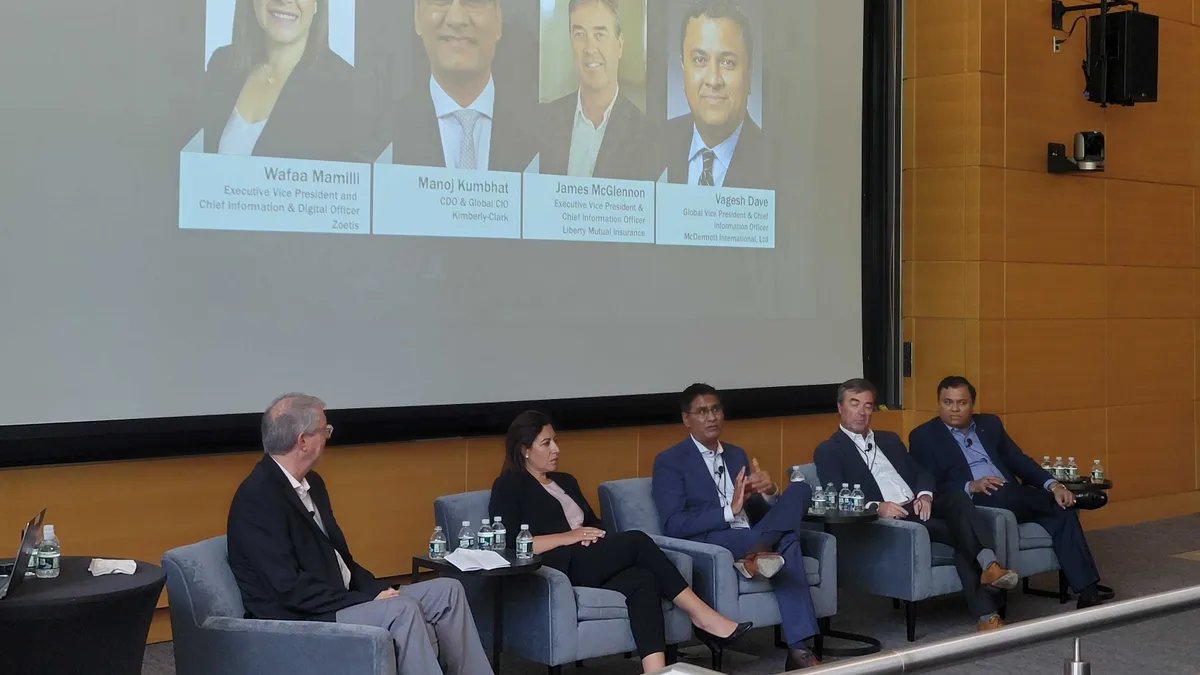CAMBRIDGE, Mass. — CIOs can promise companies streamlined tech tools and a future of transformation. But visions of a business made efficient through technology often clash with the status quo, leaving IT executives fighting with engrained company culture.
Rethinking how a business uses technology requires culture revolution, where stakeholders rely on data-informed decisions and focus on the outcomes and purpose of the technology more than individual tools.
For Wafaa Mamilli, chief information and digital officer at Zoetis, culture is the real roadblock to CIO tech plans.
"The easy one for me to give you would be talent, but I think talent is more solvable and easier than culture," said Mamilli, speaking while attending the MIT Sloan CIO Symposium Monday. Culture influences how organizations can adapt to and ultimately be transformed by technology.
Resistance to change can derail technology goals. Without support from the whole organization, CIOs will fail to guide companies to innovation, leaving money from potential new revenue streams on the table. But CIOs must play a role in steering businesses toward new ways of working, and explaining the advantages of change.
One key tool to break the transformation logjam is to partner with the executive team, according to Mamilli.
"Communicate inside and outside, but communicate with stories, not with slides," said Mamilli, who received the 2022 CIO Leadership Award Monday. "Stories paint things in the brain, and then people behave that way."
Migrating a piece of software can lead to short-term downtime, but allows for more agility in the future. Automating a process can require some adjustment, but it can reduce costs down the line.
It's in those challenges where change management strategies can make a difference, said Marina Bellini, chief information and digital officer at BAT. Technology adoption needs to break silos and introduce teamwork to deliver promised outcomes.
With change management, people can "embark on the journey of, what is the value that this technology can apply to us?" Bellini said. "Organizations still leave a lot of silos, and the beauty of technology is not technology itself, but what we can do with technology."
Tuning in to change
Executives wanting to earn executive trust can start by familiarizing themselves with how a company currently operates, and where technology can yield results.
For Manoj Kumbhat, chief digital officer and global CIO at Kimberly-Clark, it's critical that executives submerge themselves in the business, perhaps by taking customer visits or field trips to sites.
"Without you learning the business, I don't think you have credibility with the business," Kumbhat said during a panel. "Why should they listen to you?"
Executives must find a coalition to move projects forward, according to George Corbin, COO at Onriva. Tech executives must serve dual roles as companies change.
"It's not just about the tech anymore," Corbin said. "You have to at the same time be the ship's helmsman and the ship's engineer. You're up on the bridge setting direction, navigating the storm but at the same time you have to be in the engine room actually making things work, patching and fitting."
With the right structure in place, CIOs have learned, these changes no longer need to happen solely in multiyear projects, Bellini said.
"We can do things truly in sprints, and already see the value," Bellini said.












